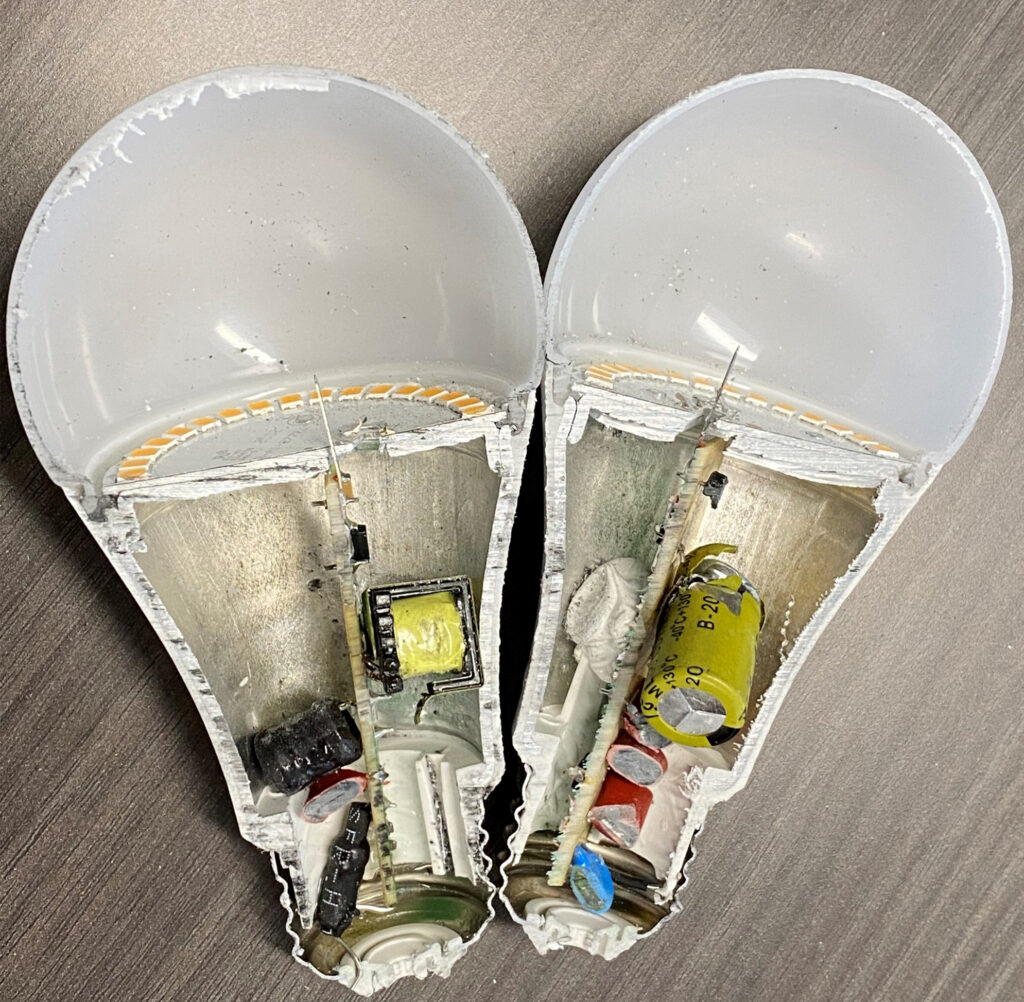A19 Bulbs and Their Potted Interiors

In the world of lighting technology, A19 bulbs stand out for their efficiency, longevity, and versatility. A critical aspect of their design, which plays a significant role in these benefits, is the ‘potted’ interior – a design feature where the internal components are encased in a solid or gel-like substance. This process, often overlooked, is crucial in enhancing the durability and performance of LED bulbs.
Composition and Purpose
The ‘potting’ material in A19 bulbs is typically a form of epoxy or silicone-based compound. This potting compound is used to envelop the internal electronic components of the bulb. The primary purpose of this process is to protect these sensitive components from environmental factors such as moisture, dust, and vibrations, which can significantly reduce the lifespan and effectiveness of the bulb.
One of the critical challenges in LED bulb design is managing the heat generated by the LED. Excessive heat can lead to reduced lifespan and efficiency. Potting helps in heat dissipation, allowing the LED bulb to maintain a lower operating temperature. This heat management is crucial for the longevity and consistent performance of the LED.
In the images below, you can see our potted bulbs for protection against heat and heavy abuse/vibration on the left and what an unpotted bulb looks like on the right.


Benefits of Potted A19 Bulbs
By protecting the internal components from physical and environmental damage, potting significantly enhances the durability of LED bulbs. This makes them suitable for use in a variety of settings, including outdoor and industrial environments where they might be exposed to harsh conditions.
The protection offered by potting leads to more stable and reliable performance over the bulb’s lifespan. This reliability is crucial in applications where consistent lighting quality is essential. Potting materials are typically flame retardant, adding an extra layer of safety against potential fire hazards. This aspect is particularly important in settings with a high risk of electrical or heat-induced fires.
In environments with a lot of movements, such as transportation or industrial machinery, vibrations can quickly damage electrical components. The potting compound helps to absorb and mitigate the effects of these vibrations, protecting the integrity of the bulb.
Applications of Potted A19 Bulbs
Potted LED bulbs find their use in various sectors due to their robust nature. In factories or warehouses, where conditions can be harsh, potted LEDs offer the resilience needed to ensure consistent lighting. For streetlights, bollard lights, or any outdoor fixtures, potted LEDs can withstand weather-related challenges better than non-potted alternatives.
Manufacturing applications, especially those with heavy machinery and tools, benefit from the vibration resistance of potted LEDs, ensuring consistent illumination. In settings like hospitals or laboratories where stable and reliable lighting is crucial, potted LEDs provide the necessary performance.
The Manufacturing Process of A19 bulbs’ “Potting”
The process of potting in LED bulbs involves precise manufacturing steps. Once the LED components are assembled, the potting compound is poured into the housing, encapsulating the internal parts. This compound then hardens, forming a solid protective layer. The quality of potting can vary based on the manufacturer’s standards, impacting the overall quality of the bulb.
Considerations in Choosing Potted LEDs
For applications where bulbs are subject to prolonged use, understanding the heat dissipation efficiency of the potting material is crucial. In areas with high humidity or potential water exposure, the quality of potting becomes a significant consideration to prevent moisture ingress. While potted LEDs may be more expensive than non-potted ones, their longevity and reliability can offer cost savings in the long term.
The Future of Potted LED Technology
The future of LED technology continues to evolve, with potting remaining a key component of the design. Innovations in potting materials and techniques are likely to further enhance the performance and application range of LED bulbs.
Conclusion
Potted interiors in A19 bulbs represent a significant technological advancement in lighting. By offering enhanced protection, improved heat management, and greater durability, they have become a preferred choice in diverse lighting applications. As we continue to embrace LED technology for its efficiency and sustainability, understanding the intricacies of its design, such as potting, becomes essential. At eLumigen, we are committed to leveraging these advancements to provide high-quality, durable lighting solutions. For more information or to explore our range of LED products, we encourage you to reach out to us and discover the ideal lighting solutions for your needs.

